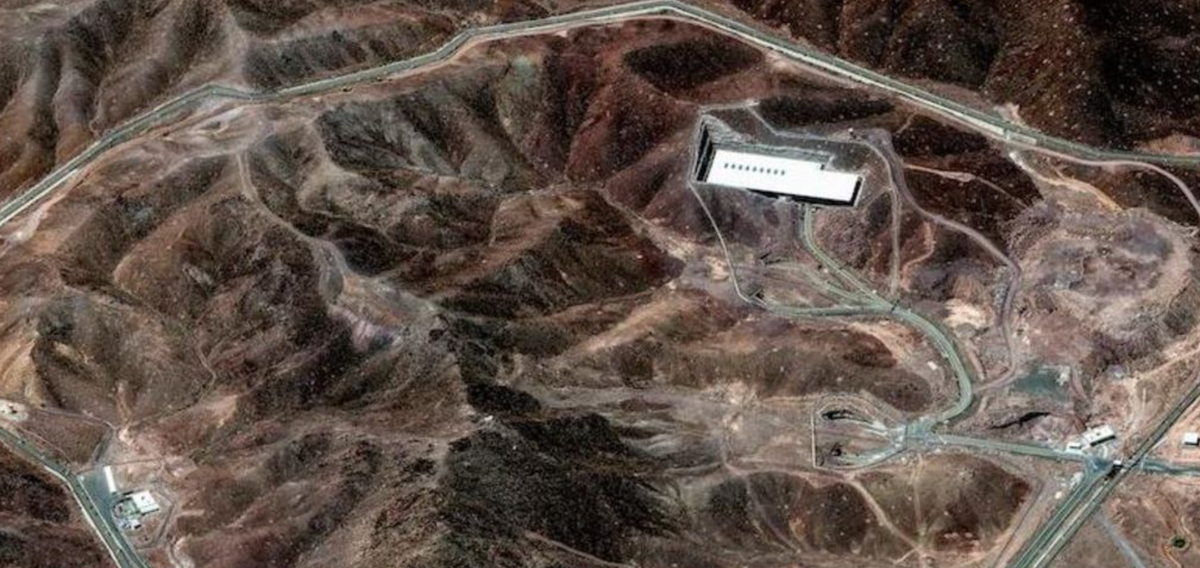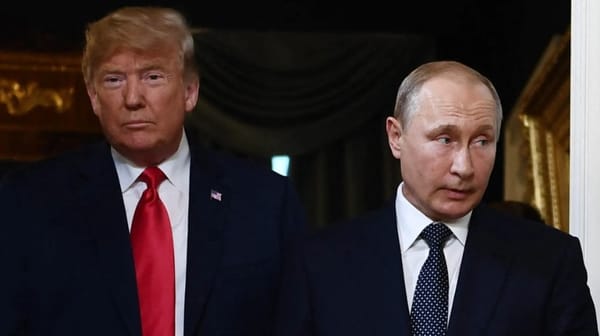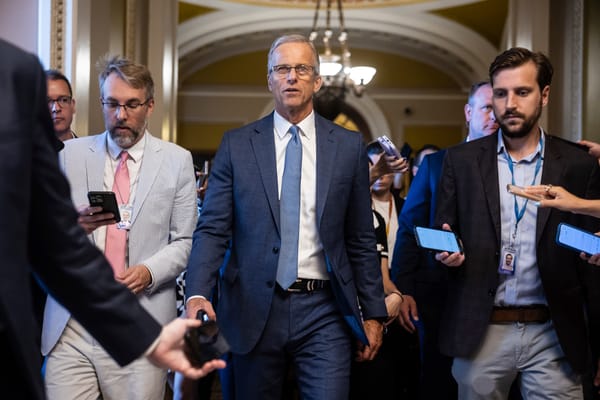United States Bombing Strike on Iran: A Historic Military Intervention

In a dramatic escalation of Middle Eastern tensions, President Donald Trump announced on the evening of June 21, 2025, that the United States had conducted precision airstrikes against three Iranian nuclear facilities. This marked the first direct U.S. military action against Iran in history and represented a significant shift in American foreign policy in the region. The strikes targeted Iran's most critical uranium enrichment sites at Fordow, Natanz, and Esfahan, facilities that have long been at the center of international concerns over Iran's nuclear ambitions.
The operation, executed using B-2 stealth bombers and massive bunker-buster weapons, came after nine days of escalating conflict between Israel and Iran. What began as an Israeli preemptive strike on Iranian nuclear facilities had evolved into a broader regional crisis, ultimately drawing the United States into direct military confrontation with the Islamic Republic. The decision to intervene marked a historic moment in U.S.-Iran relations and fundamentally altered the strategic landscape of the Middle East.
Background and Context
The Israel-Iran Conflict Escalation
The current crisis began on June 13, 2025, when Israel launched a surprise attack on Iranian nuclear and military installations [1]. The Israeli operation, which involved 200 fighter jets dropping 330 munitions, targeted uranium enrichment facilities and eliminated several high-ranking Iranian military officials [2]. Prime Minister Benjamin Netanyahu stated that the objective was to dismantle Iran's nuclear program, which he claimed would soon enable the production of nuclear weapons [3].
Iran's response was swift and severe, launching hundreds of missiles and drones toward Israel in multiple waves [4]. According to Israeli military sources, Iran fired over 450 missiles and 1,000 drones at Israeli targets, though most were intercepted by Israel's advanced air defense systems [5]. The conflict quickly escalated beyond a simple exchange of strikes, developing into what analysts described as the most significant direct confrontation between the two nations in decades [6].
Trump's Decision-Making Process
President Trump initially distanced himself from Israel's surprise attack, stating that the U.S. was not involved in the operation [6:1]. However, as the conflict intensified over the following week, Trump faced mounting pressure to decide whether America would join Israel's campaign [7]. On June 19, Trump announced he would allow Iran two weeks to negotiate before making a final decision on U.S. military involvement [8].
That timeline proved dramatically shorter than anticipated [9]. According to sources familiar with the decision-making process, Trump met with his national security team in the White House Situation Room on Saturday evening before authorizing the strikes [10]. The decision represented a significant reversal from Trump's earlier campaign promises to avoid costly foreign interventions in the Middle East [6:2].
The Military Operation
Target Selection and Strategic Objectives
The U.S. strikes focused on three of Iran's most critical nuclear facilities, each representing a different aspect of the country's uranium enrichment capabilities [11]. The primary target was the Fordow Fuel Enrichment Plant, located approximately 100 kilometers southwest of Tehran and buried nearly 300 feet underground in a mountain [12]. This facility, considered Iran's most secretive and heavily fortified nuclear installation, housed approximately 3,000 centrifuges capable of enriching uranium to weapons-grade levels [13].
The second target was the Natanz facility, Iran's main uranium enrichment site, which operates over 50,000 centrifuges with many buried underground [13:1]. Natanz had been previously targeted by Israeli strikes but remained partially operational [1:1]. The third facility struck was Esfahan, another key component of Iran's nuclear infrastructure that plays a crucial role in the uranium conversion process [11:1].
Weapons and Aircraft Employed
The operation utilized B-2 Spirit stealth bombers, the only aircraft capable of carrying the specialized weapons needed to penetrate Iran's heavily fortified underground facilities [14]. The bombers deployed GBU-57 Massive Ordnance Penetrator (MOP) bombs, weighing 30,000 pounds each and specifically designed to destroy deep underground bunkers [15]. These "bunker buster" weapons can penetrate up to 200 feet of earth or 60 feet of reinforced concrete before detonating [16].
U.S. officials confirmed that multiple MOPs were used in the operation, with two bombs designated for each targeted site [3:1]. Additionally, 30 Tomahawk missiles launched from U.S. submarines supplemented the bombing campaign [17]. The precision-guided munitions were equipped with advanced GPS navigation systems and lattice fin guidance technology to ensure accurate targeting despite potential GPS jamming [18].
Operational Execution
The B-2 bombers originated from Whitman Air Force Base in Missouri, with support from KC-135 Stratotankers for aerial refueling [18:1]. The aircraft followed carefully plotted routes to avoid known Iranian missile defense sites, utilizing their stealth capabilities to penetrate Iranian airspace undetected [15:1]. The bombers operated at extremely high altitudes to maximize the effectiveness of the bunker-buster weapons and minimize exposure to Iranian air defenses [18:2].
President Trump announced the completion of the operation via Truth Social at 7:46 PM ET, stating: "We have completed our very successful attack on the three Nuclear sites in Iran, including Fordow, Natanz, and Esfahan. All planes are now outside of Iran air space. A full payload of BOMBS was dropped on the primary site, Fordow" [11:2][19][20].
Presidential Address and Political Response
Trump's National Address
At 10:00 PM ET, President Trump addressed the nation from the White House Cross Hall, flanked by Vice President J.D. Vance, Secretary of State Marco Rubio, and Defense Secretary Pete Hegseth [21]. In his four-minute speech, Trump characterized the strikes as "a spectacular military success" and declared that Iran's key nuclear enrichment facilities had been "completely and totally obliterated" [22].
Trump's address carried both celebration of military achievement and stern warnings for Iran's future conduct [23]. "Iran, the bully of the Middle East, must now make peace," Trump declared. "If they do not, future attacks will be far greater and a lot easier" [22:1]. The president emphasized that numerous additional targets remained available should Iran choose to continue its nuclear program or retaliate against U.S. forces [23:1].
Congressional and Political Reactions
The strikes immediately sparked intense political debate regarding presidential authority and constitutional requirements for military action [24]. Representatives Ro Khanna (D-Calif.) and Thomas Massie (R-Ky.), co-sponsors of the War Powers Resolution, criticized Trump for ordering strikes without congressional approval [24:1]. "This is not constitutional," Massie stated, while Khanna called for an immediate return to Washington to vote on their War Powers Resolution [24:2].
House Minority Leader Hakeem Jeffries condemned the strikes as "reckless and unauthorized," demanding a full classified briefing for Congress and warning of potential "disastrous war in the Middle East" [25]. However, Republican hawks largely supported the operation, with Senator Lindsey Graham calling it "the right call" and Senator Tom Cotton praising Trump's decision to prevent Iran from acquiring nuclear weapons [25:1].
Truth Social Technical Issues
The announcement of the strikes caused immediate technical problems for Trump's Truth Social platform [20:1]. Beginning around 8:00 PM ET, users encountered widespread outages and error messages stating "Network failed. Please try again" [20:2]. The platform's inability to handle the surge in traffic following Trump's historic announcement highlighted the significance of the moment and the intense public interest in the developing crisis [20:3].
Iran's Nuclear Program and Facilities Targeted
Fordow Facility Significance
The Fordow facility represented the most challenging and strategically important target in the U.S. operation [26]. Located in a mountainous region near Qom, the facility is buried 80-110 meters underground and was specifically designed to withstand conventional airstrikes [27]. Fordow has been central to Iran's uranium enrichment activities, utilizing both older IR-1 centrifuges and more advanced IR-6 centrifuges to produce highly enriched uranium [27:1].
According to intelligence assessments, Fordow was believed to be the facility capable of enriching uranium from 60 percent to the 90 percent level required for nuclear weapons [27:2]. The International Atomic Energy Agency had previously collected samples from Fordow showing uranium enriched to 83.7 percent, raising serious concerns about Iran's nuclear intentions [27:3]. The facility's destruction represents a significant setback to Iran's nuclear weapons potential [26:1].
Natanz and Esfahan Operations
The Natanz facility, with its vast network of over 50,000 centrifuges, served as Iran's primary uranium enrichment site [13:2]. The facility had been repeatedly targeted by both cyber attacks and conventional strikes, including the famous Stuxnet computer virus in 2010, but had continued operations throughout previous disruptions [27:4]. The U.S. strikes aimed to permanently disable the centrifuge cascades and enrichment infrastructure at the site [13:3].
Esfahan, the third target, played a crucial role in Iran's nuclear fuel cycle as a uranium conversion facility [13:4]. The site processes uranium ore into uranium hexafluoride gas, which is then used to feed the centrifuges at enrichment facilities like Fordow and Natanz [13:5]. By targeting all three facilities simultaneously, the U.S. operation aimed to disrupt Iran's entire nuclear production chain [10:1].
International and Regional Reactions
Allied Responses
Israeli Prime Minister Benjamin Netanyahu issued an immediate statement praising Trump's decision, calling it a "bold decision" that "will change history" [28]. Netanyahu emphasized that the strikes would deny "the world's most dangerous regime the world's most dangerous weapons," reflecting the close coordination between Israeli and American forces throughout the operation [28:1].
NATO Secretary-General Mark Rutte called for de-escalation, describing Israel's initial strikes as "unilateral action" and emphasizing the need for diplomatic efforts to ease regional tensions [2:1]. European leaders generally expressed concern about the escalation while acknowledging the complexity of the nuclear threat posed by Iran [28:2].
Opposition and Condemnation
Several countries strongly condemned the U.S. action [28:3]. Venezuela's Foreign Minister characterized the strikes as "military aggression" carried out "at the request of the State of Israel," while Cuba's President Miguel Diaz-Canel called the bombing "a dangerous escalation" that "violates the UN Charter and international law" [28:4].
China and Russia issued a joint condemnation of the strikes, with Presidents Xi Jinping and Vladimir Putin describing them as violations of international law and calling for immediate diplomatic solutions [29]. The joint statement reflected growing alignment between Beijing and Moscow in opposition to U.S. and Israeli actions in the Middle East [29:1].
United Nations Response
UN Secretary-General António Guterres expressed grave alarm at the escalation, warning that "there is a growing risk that this conflict could rapidly get out of control – with catastrophic consequences for civilians, the region, and the world" [28:5]. Guterres emphasized that "there is no military solution" and called for diplomatic engagement as "the only path forward" [28:6].
The UN Security Council faced demands for emergency sessions to address the crisis, though divisions among permanent members made unified action unlikely [28:7]. The organization's limited ability to respond effectively highlighted the constraints on international institutions when major powers are directly involved in military conflicts [4:1].
Strategic Implications and Risks
Iranian Retaliation Capabilities
Iran possesses significant capabilities to retaliate against U.S. interests throughout the Middle East [30]. The Islamic Republic maintains extensive missile arsenals and proxy forces capable of targeting American military installations across the region [15:2]. U.S. bases potentially vulnerable to Iranian retaliation include Al Udeid Air Base in Qatar, the Navy's Fifth Fleet headquarters in Bahrain, and Al Asad Air Base in Iraq [30:1].
Iranian officials had previously warned that U.S. involvement would result in "irreparable damage" and could trigger "an all-out war" in the region [31]. Supreme Leader Ayatollah Ali Khamenei specifically cautioned that "any military involvement by the U.S. will undoubtedly result in irreparable damage to them" [31:1]. These threats underscore the significant risks associated with Trump's decision to authorize direct military action [32].
Strait of Hormuz Concerns
One of the most serious potential consequences of the U.S. strikes involves Iran's ability to disrupt shipping through the Strait of Hormuz [33]. This narrow waterway, measuring only 21 miles across at its narrowest point, handles approximately 20 percent of global oil traffic and significant liquefied natural gas shipments [33:1]. Iranian threats to close or mine the strait could cause dramatic increases in global energy prices and disrupt international commerce [15:3].
While Gulf Arab states have developed some alternative pipeline routes to bypass the strait, the vast majority of regional oil exports still depend on this critical chokepoint [33:2]. Iran's own economy relies heavily on Strait of Hormuz shipping, making closure potentially self-destructive, but the threat remains a powerful tool for retaliation [33:3].
Nuclear Program Assessment
Intelligence agencies assess that the U.S. strikes have significantly degraded Iran's nuclear capabilities, though complete elimination remains uncertain [3:2]. The destruction of the Fordow facility, in particular, removes Iran's most secure uranium enrichment capability and forces any future weapons program to rely on more vulnerable above-ground facilities [12:1].
However, Iran has demonstrated remarkable resilience in rebuilding nuclear infrastructure following previous attacks and sanctions [5:1]. The country's nuclear scientists and engineers, while suffering casualties in the recent strikes, retain significant expertise that could enable reconstruction efforts [34]. Additionally, Iran may have relocated some nuclear materials and equipment prior to the attacks, limiting the long-term impact of the strikes [3:3].
Economic and Market Impact
Oil Market Volatility
The U.S. strikes triggered immediate volatility in global energy markets, with Brent crude futures surging 11% since the crisis began [35]. Traders anticipated further price increases following the American intervention, given the escalated risk of broader regional conflict [35:1]. The volatility reflected concerns about potential disruptions to oil production and shipping in a region responsible for one-third of global oil output [35:2].
Energy analysts warned that Iranian retaliation could push oil prices toward $100 per barrel if the conflict expands to include attacks on regional oil infrastructure or shipping disruptions through the Strait of Hormuz [35:3]. The price increases have already begun affecting diesel and freight costs, indicating broader economic impacts beyond crude oil markets [35:4].
Regional Economic Consequences
The escalating conflict has created significant uncertainty for regional economies heavily dependent on oil exports and international trade [33:4]. Gulf Arab states, while generally supporting efforts to constrain Iran's nuclear program, face potential economic disruption if the conflict expands [33:5]. Countries like Qatar, which exports substantial quantities of liquefied natural gas through the Strait of Hormuz, are particularly vulnerable to shipping disruptions [33:6].
The conflict has also affected global supply chains and international investment in the region [35:5]. Shipping companies have begun implementing additional security measures and some have canceled routes through potentially dangerous areas, adding costs and delays to international commerce [3:4].
Historical Context and Precedents
Previous U.S.-Iran Military Encounters
The June 21 strikes represent the first direct U.S. military attack on Iranian territory, but American and Iranian forces have clashed repeatedly over the decades [36]. The most recent significant confrontation occurred in January 2020, when Iran launched Operation Martyr Soleimani in response to the U.S. assassination of Quds Force commander Qasem Soleimani [36:1].
In that 2020 incident, Iran fired over 12 ballistic missiles at Al Asad Airbase in Iraq, causing traumatic brain injuries to 110 U.S. service members in what was described as the largest ballistic missile attack against American forces in history [36:2]. The Iranian strikes were calibrated to avoid mass casualties while demonstrating the country's ability to strike U.S. assets [36:3].
Nuclear Facility Attacks
The targeting of nuclear facilities has historical precedents in the Middle East, most notably Israel's 1981 bombing of Iraq's Osirak reactor [15:4]. That operation, conducted using conventional fighter aircraft against an above-ground facility, effectively ended Iraq's nuclear weapons program [15:5]. The current strikes against Iran represent a far more complex operation given the hardened, underground nature of the targeted facilities [15:6].
Previous efforts to constrain Iran's nuclear program have included the Stuxnet cyber attack in 2010, which damaged centrifuges at Natanz, and various forms of economic sanctions [27:5]. However, none of these measures achieved the level of physical destruction accomplished by the U.S. bunker-buster weapons [26:2].
Future Implications and Scenarios
Potential Iranian Responses
Iran faces several options for responding to the U.S. strikes, each carrying different risks and strategic implications [30:2]. The most immediate concern involves attacks on U.S. military bases throughout the Middle East, where thousands of American personnel remain vulnerable to Iranian missile strikes [30:3]. Iran has previously demonstrated precision strike capabilities and possesses sufficient missile inventory to conduct sustained attacks [15:7].
Alternative Iranian responses could include proxy attacks through allied groups in Iraq, Syria, Lebanon, and Yemen [5:2]. Iran's network of regional proxies, while weakened by recent Israeli operations, retains significant capabilities for asymmetric warfare against U.S. and Israeli interests [5:3]. Attacks on shipping, cyberwarfare, and terrorist operations represent additional options available to Iranian decision-makers [30:4].
Regional Stability Considerations
The U.S. strikes have fundamentally altered Middle Eastern strategic dynamics, potentially triggering broader regional realignment [6:3]. Arab states that privately supported constraining Iran's nuclear program now face the prospect of expanded conflict that could threaten their own security and economic interests [33:7]. The crisis may force regional powers to choose sides more explicitly in the U.S.-Iran confrontation [29:2].
The involvement of major powers like China and Russia in opposing the U.S. action adds another layer of complexity to the crisis [29:3]. Their joint condemnation signals potential support for Iran that could complicate American efforts to contain the conflict [29:4]. This great power dimension raises the stakes beyond regional Middle Eastern concerns to global strategic competition [29:5].
Long-term Nuclear Implications
The success or failure of the U.S. strikes in permanently constraining Iran's nuclear program will significantly influence future nonproliferation efforts [27:6]. If Iran proves capable of rebuilding its nuclear infrastructure relatively quickly, the operation may have achieved only temporary gains at the cost of regional stability [5:4]. Conversely, if the strikes prove durably effective, they may establish a precedent for preventive military action against nuclear programs [26:3].
The crisis also affects broader nuclear deterrence calculations, potentially encouraging other countries to accelerate their own nuclear programs before becoming vulnerable to similar attacks [27:7]. The international community's response to the U.S. action will influence these calculations and shape future nonproliferation efforts [28:8].
Conclusion
The United States bombing strike on Iran's nuclear facilities on June 21, 2025, represents a watershed moment in Middle Eastern geopolitics and U.S. foreign policy. President Trump's decision to authorize direct military action against Iranian nuclear sites marked the end of decades of diplomatic and economic efforts to constrain Iran's nuclear ambitions through non-military means. The operation successfully targeted Iran's most critical uranium enrichment facilities using advanced bunker-buster weapons that only the United States possesses.
The immediate military success of the strikes, however, has created new challenges and uncertainties that extend far beyond the tactical objectives achieved. Iran's threats of retaliation against U.S. forces and interests throughout the region pose significant risks of escalation that could draw additional countries into the conflict. The potential for disruption to global energy markets through attacks on shipping or oil infrastructure adds economic dimensions to an already complex crisis.
International reactions to the strikes reveal deep divisions in the global community, with allies offering qualified support while major powers like China and Russia strongly condemn the action. These divisions complicate efforts to manage the crisis through diplomatic channels and raise the stakes of the confrontation beyond regional concerns to broader questions of international law and great power competition.
The long-term implications of the operation will depend largely on Iran's response and the international community's ability to prevent further escalation. While the strikes have undoubtedly set back Iran's nuclear program significantly, they have also eliminated diplomatic alternatives and created new imperatives for Iranian retaliation. The coming days and weeks will determine whether Trump's bold military action proves to be a strategic masterstroke that permanently constrains Iran's nuclear ambitions or the opening act of a broader Middle Eastern war with global ramifications.
The historic nature of these events cannot be overstated. For the first time in the 46-year history of the Islamic Republic of Iran, American military forces have directly attacked Iranian territory. This crossing of a long-standing red line in U.S.-Iran relations has fundamentally altered the strategic landscape of the Middle East and established new precedents for the use of military force in nuclear nonproliferation efforts. The world now watches anxiously to see whether this unprecedented escalation will lead to the peace that President Trump declared as his ultimate objective or to the broader regional catastrophe that many observers fear.
https://www.usatoday.com/story/graphics/2025/06/17/israel-iran-timeline-maps-graphics/84240285007/ ↩︎ ↩︎
https://www.aa.com.tr/en/world/nato-chief-says-crucial-for-us-allies-to-de-escalate-mideast-after-israels-strikes-on-iran/3596414 ↩︎ ↩︎
https://www.bbc.com/news/articles/cvg9r4q99g4o ↩︎ ↩︎ ↩︎ ↩︎ ↩︎
https://www.nbcnews.com/world/middle-east/live-blog/israel-iran-conflict-rcna214241 ↩︎ ↩︎
https://apnews.com/article/israel-iran-war-nuclear-gaza-news-06-20-2025-8adbedb3427a76be7dbde4a18a05f75f ↩︎ ↩︎ ↩︎ ↩︎ ↩︎
https://www.cnbc.com/2025/06/21/trump-israel-iran-conflict.html ↩︎ ↩︎ ↩︎ ↩︎
https://www.pbs.org/newshour/politics/does-trump-have-the-authority-to-order-u-s-strikes-on-iran ↩︎
https://www.foxnews.com/politics/trump-addresses-nation-spectacular-military-success-us-strikes-iranian-nuclear-facilities ↩︎
https://www.axios.com/2025/06/21/us-strike-iran-nuclear-israel-trump ↩︎ ↩︎
https://www.cbsnews.com/news/u-s-launches-strikes-iranian-nuclear-facilities-trump-says/ ↩︎ ↩︎ ↩︎
https://nypost.com/2025/06/21/world-news/what-is-irans-secretive-fordow-nuclear-facility/ ↩︎ ↩︎
https://www.ndtv.com/world-news/fordow-isfahan-natanz-the-3-key-iranian-nuclear-sites-us-attacked-israel-iran-war-donald-trump-8729029 ↩︎ ↩︎ ↩︎ ↩︎ ↩︎ ↩︎
https://www.nytimes.com/2025/06/21/us/politics/military-middle-east-wars.html ↩︎ ↩︎ ↩︎ ↩︎ ↩︎ ↩︎ ↩︎ ↩︎
https://www.foxnews.com/live-news/israel-iran-conflict-june-21-2025 ↩︎
https://www.npr.org/2025/06/21/nx-s1-5441127/iran-us-strike-nuclear-trump ↩︎
https://www.wired.com/story/truth-social-crashes-as-trump-live-posts-bombing-iran/ ↩︎ ↩︎ ↩︎ ↩︎
https://www.newsweek.com/trump-says-iran-nuclear-facilites-obliterated-warns-further-attacks-2088891 ↩︎
https://apnews.com/article/trump-iran-speech-transcript-text-ff4b286992309ec1337e04260247bb1e ↩︎ ↩︎
https://www.jta.org/2025/06/21/united-states/in-national-address-trump-threatens-more-attacks-on-iran-if-peace-does-not-come-quickly ↩︎ ↩︎
https://www.foxnews.com/politics/unconstitutional-congress-evokes-new-war-powers-resolution-reject-trumps-strikes-iran ↩︎ ↩︎ ↩︎
https://www.politico.com/news/2025/06/21/maga-largely-falls-in-line-on-trumps-iran-strikes-00416450 ↩︎ ↩︎
https://www.csis.org/analysis/options-targeting-irans-fordow-nuclear-facility ↩︎ ↩︎ ↩︎ ↩︎
https://www.csis.org/analysis/three-things-will-determine-irans-nuclear-future-fordow-just-one-them ↩︎ ↩︎ ↩︎ ↩︎ ↩︎ ↩︎ ↩︎ ↩︎
https://www.gmanetwork.com/news/topstories/world/950156/world-leaders-react-to-us-attack-on-iran/story/ ↩︎ ↩︎ ↩︎ ↩︎ ↩︎ ↩︎ ↩︎ ↩︎ ↩︎
https://www.youtube.com/watch?v=tnXSZv5rXCE ↩︎ ↩︎ ↩︎ ↩︎ ↩︎ ↩︎
https://nypost.com/2025/06/21/world-news/here-are-some-of-the-us-bases-and-assets-iran-could-target/ ↩︎ ↩︎ ↩︎ ↩︎ ↩︎
https://www.pbs.org/newshour/world/irans-supreme-leader-warns-u-s-military-intervention-would-cause-irreparable-damage ↩︎ ↩︎
https://6abc.com/post/us-has-struck-iranian-nuclear-sites-trump-says-joining-israeli-air-campaign/16811258/ ↩︎
https://www.dw.com/en/hormuz-strait-oil-supplies-iran-israel-gulf-lng-eia/a-72952336 ↩︎ ↩︎ ↩︎ ↩︎ ↩︎ ↩︎ ↩︎ ↩︎
https://www.npr.org/2025/06/14/nx-s1-5433317/israel-iran-strikes ↩︎
https://finance.yahoo.com/news/trump-airstrikes-iran-leave-oil-020645713.html ↩︎ ↩︎ ↩︎ ↩︎ ↩︎ ↩︎
https://en.wikipedia.org/wiki/Operation_Martyr_Soleimani ↩︎ ↩︎ ↩︎ ↩︎




